about life
Summer 2022
10
Better Systems. Better Experience. A quick look at two new initiatives
14
The Living Saints Meet the remarkable Pam Duffy
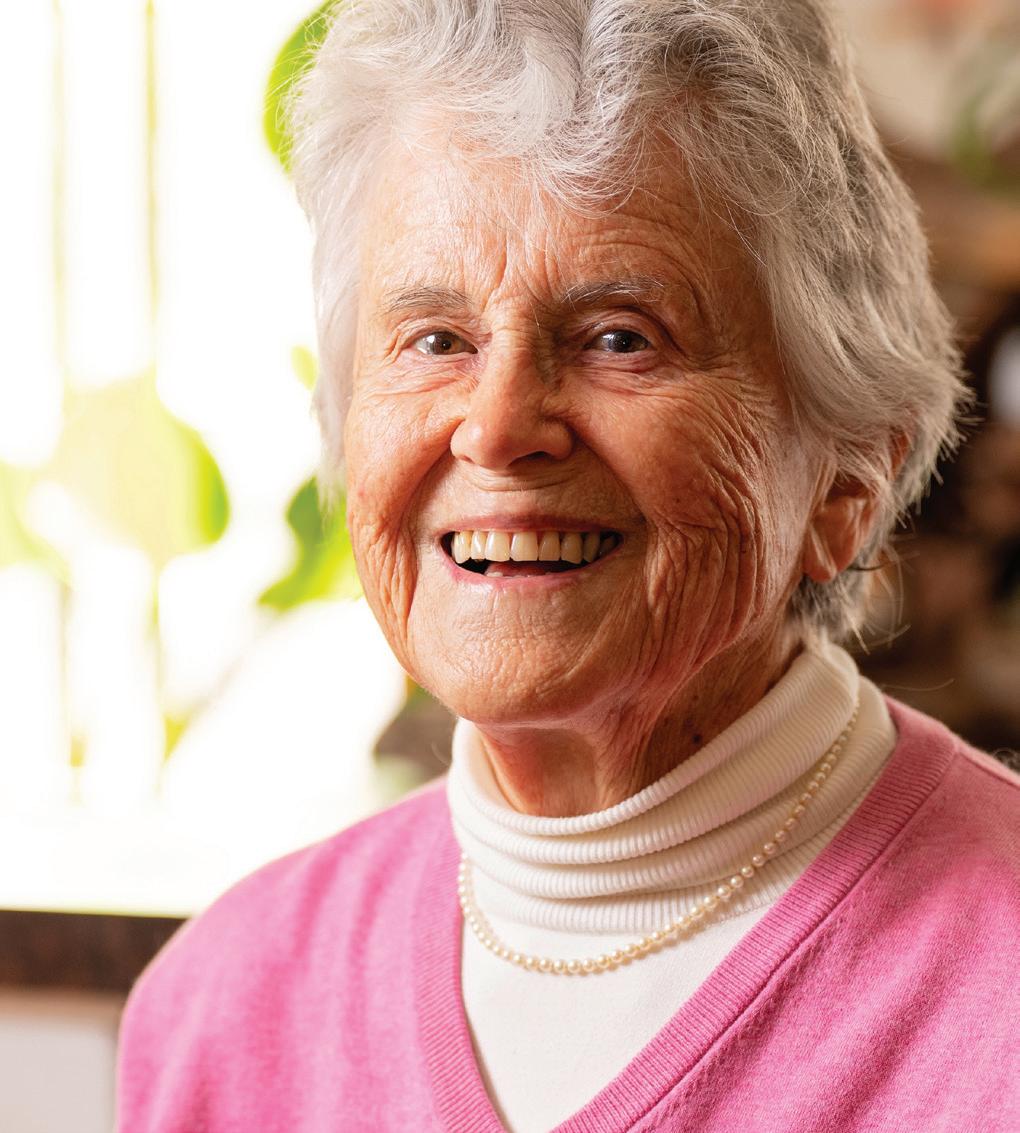
This issue...
is a celebration of the stories of Life Care – our people, our achievements and those whom we support to enjoy ‘Inspired Living’.
Cover image: Life Care At Home client Pam Duffy
4
Welcome Thoughts from Life Care CEO Allen Candy.
6
“That’s Amore!” How singing in the shower helps Vincenzo to spread the love.
10
Better Systems. Better Experience. A quick look at two new initiatives. 12 Our People New faces and career progression at Life Care.

about life
Barbara and Colin Semmens
14
The Living Saints
Meet the remarkable Pam Duffy.
18
Saving Grace
An extraordinary story of love and loss.
22
Caring for Centenarians
A short reflection on caring for centenarians.
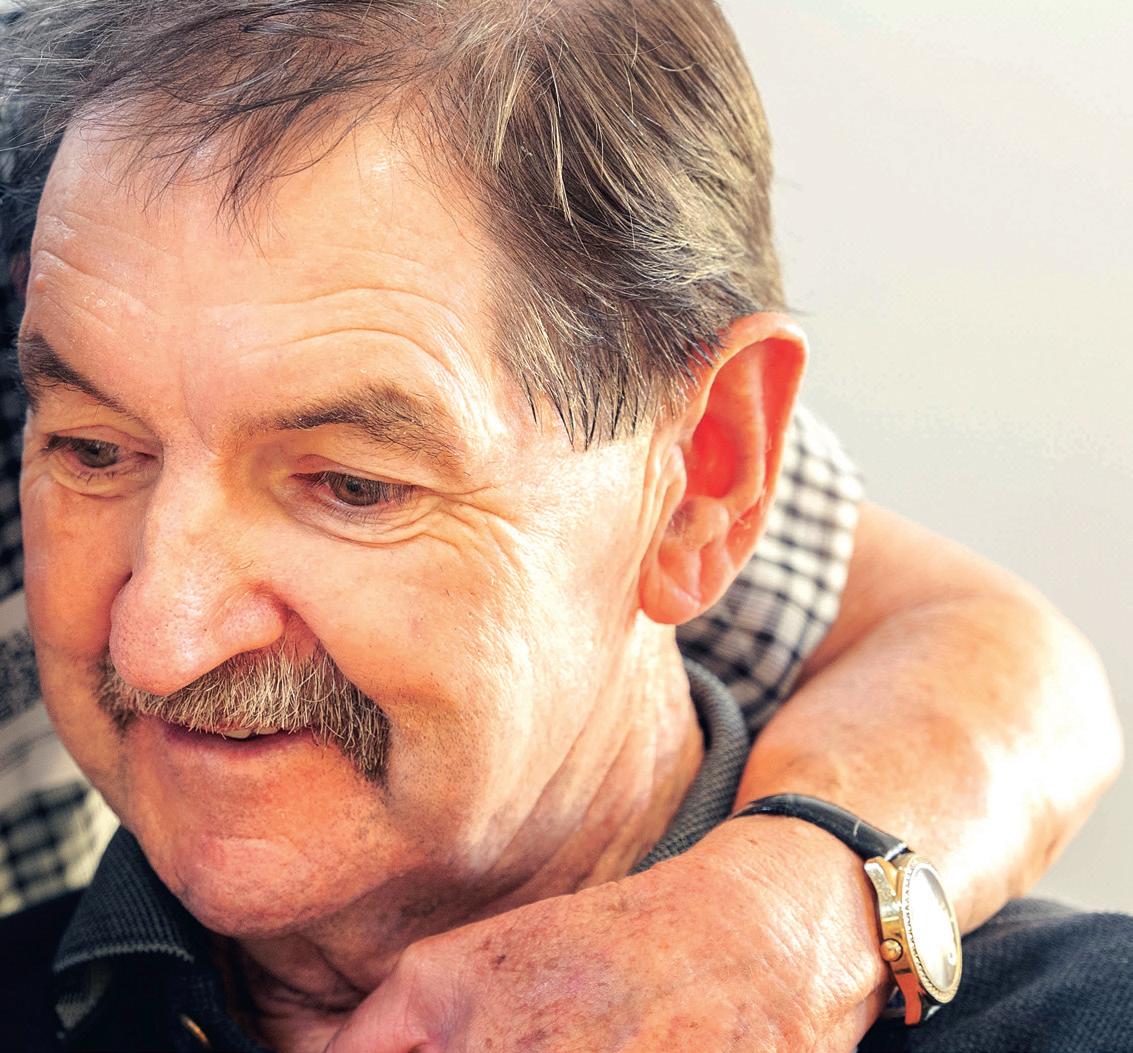
26
Rumpus on the Campus Life Care people show us what they get up to every day...
SUMMER 2022
Welcome
Thoughts from CEO Allen Candy
At the start of the last edition of About Life, I commenced my update by saying that 2022 has probably been the most challenging year for the aged care industry ever. I stand by this statement, and the latter half of the year has only reinforced this opinion.
For Life Care, the challenge has been perhaps even more pronounced due to our determination to progress rather than just survive, despite the prevailing headwinds.
The strongest headwind has, of course, been COVID-19 and its associated resourcing challenges. While virtually every industry is struggling to find good people, the effect of this talent drought has drastic implications in aged care. I am particularly grateful at this time for Life Care’s reputation as a great place to work. While we have not been immune from these challenges, our team continues to meet the challenge due to this reputation and through innovative talent sourcing and engagement strategies.
Life Care’s commitment to improvement also resulted in an investment in community engagement. The customer advocate and community engagement organisation Point Heard was tasked with conducting interviews with families and residents across four of our five homes; the fifth series of interviews is planned for early in 2023. The resulting reports highlighted many positives valued by residents and families. However, the real value of this research has been its focus on key areas for improvement. One such area has been that of customer feedback.
Point Heard highlighted that it was not uncommon for residents and families to be unaware of our customer feedback and complaints process. In light of this, a new, more accessible, better-structured Customer Feedback Framework has been developed and shared with our community (see the associated article on page 11). In addition to making the provision of feedback easier, this framework also focuses on empowering the Life Care team to ‘own and resolve’ feedback on the spot while also making it clearer how to share or escalate feedback when appropriate.
Another significant development has been our transition to a new care and clinical support IT program this year; the incumbent system, PeoplePoint, has been used by Life Care for almost a decade. While it has been a capable system, the opportunities presented by the need to upgrade are considerable. Across October and November Life Care has been transitioning to Leecare, a new clinical management system considered ‘best of breed’ (see the associated article on page 11). Leecare brings considerable advantages over PeoplePoint. Most significantly, several automated workflow improvements will save the Life Care team significant time and effort, leaving them freer to deliver an even better experience for Life Care residents.
As we look to 2023, our focus is on the ongoing Federal Government reform and developing a new community at Golden Grove. Above all else, however, our focus is on our team and on becoming a true employer of choice by developing a tangible and unique Employment Value Proposition that will see us recognise, recruit, retain and develop a team that regularly exceeds expectations.
While I hope 2023 will be an easier year, I don’t doubt it will have its challenges. Regardless, I remain confident that the Life Care team will again show its true colours and continue to do amazing work supporting our customers.
I wish you and your loved ones a Merry Christmas and a safe and prosperous New Year.
4 about life
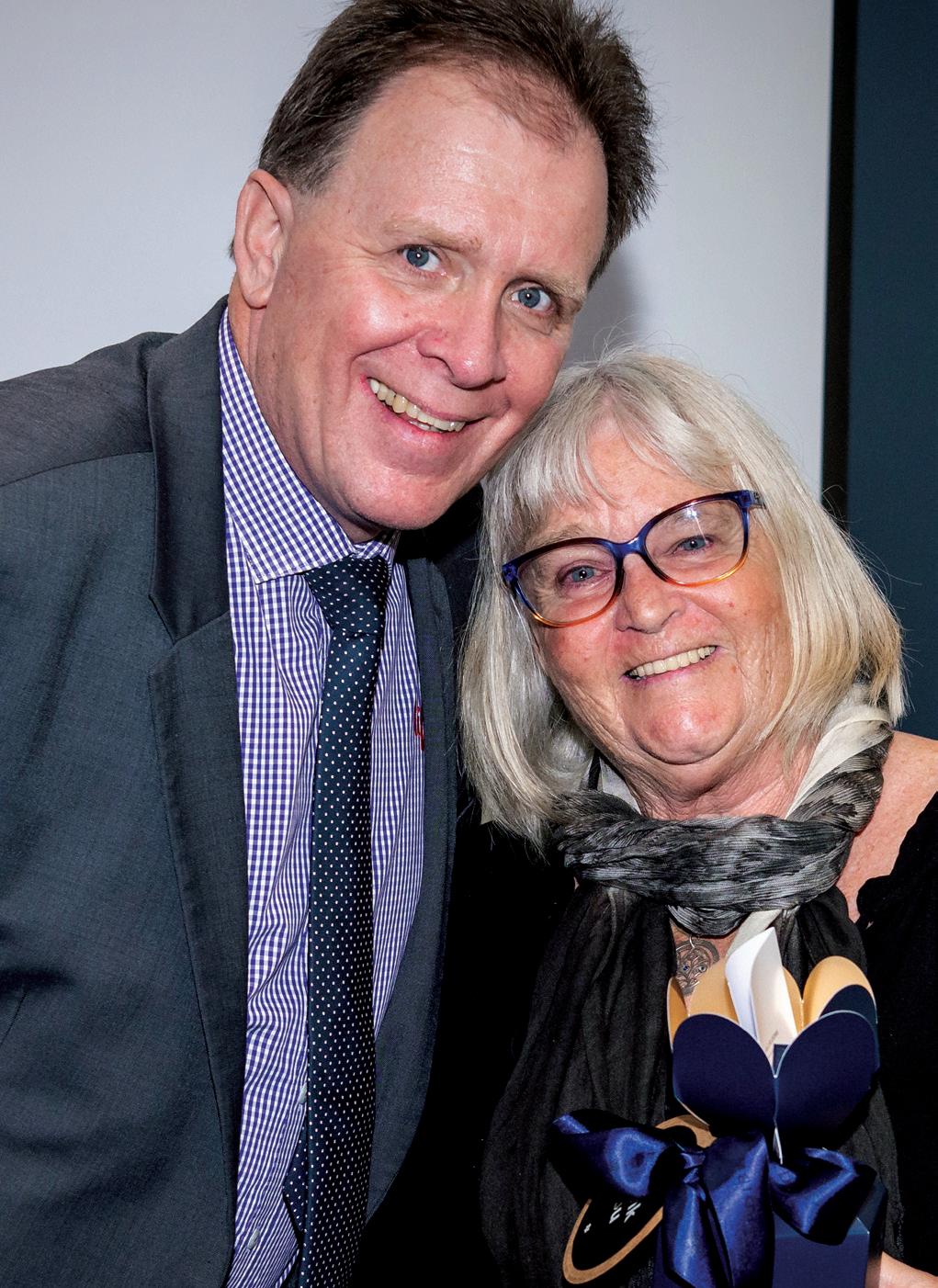
SUMMER 2022 5

6 about life
“That’s Amore!”
In 1964, when Vincenzo Apruzzese arrived from Italy, he and his wife of 18 months lived in a shed for a year. The shed sat at the front of a block of land in Athelstone. It was here that Vincenzo built the first of three homes for his family and a community in which to belong.
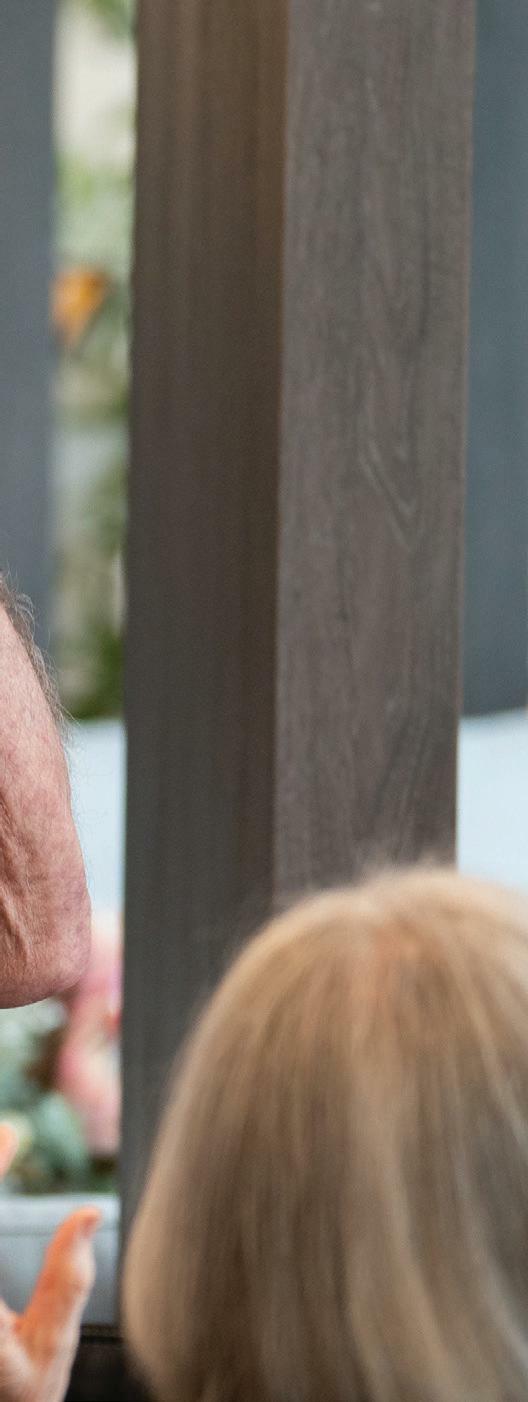
‘When I first come to Australia,’ explained Vincenzo in the Italian accent much-loved by so many, ‘I couldn’t speak English. I was too scared to start my own business. I work two years in a foundry.’
Vincenzo’s work ethic would not only see him build three houses but often work two jobs at the same time.
‘I walked 20 kilometres a day. I swam. I was healthy,’ said Vincenzo. ‘But then, [I contracted] bowel cancer. This was six or seven years ago.
‘The [doctor who operated] was a crook. He burned the cancer but [also] cut some important nerves. [There was] a lot of infection. For three months, I lost blood. My wife was crying every day.
‘Then I found a Chinese doctor. He fixed me up.’
Given this experience, it’s no surprise that when Vincenzo fractured his vertebrae, he refused treatment.
‘I only took one tablet,’ said Vincenzo matter-offactly.
‘I’m a survivor. I may look like [the Hunchback of] Notre Dame,’ said Vincenzo with a laugh, ‘but I’m still strong. I keep living to look after my children and my grandchildren.
SUMMER 2022 7
‘To be together with the people is important. Money is no longer important. I was never hungry for money. I work very hard, but when you come from a family with 14 kids, you’re never going to be rich!’
Living with such a large family does come with its upsides, though.
‘Because my family are all over the world, my name is all over the world!’ said Vincenzo.
Vincenzo’s singing didn’t stop there. He now sings every Wednesday at ‘Coffee Time’. And more recently, the story of his singing was picked up by Radio Italian 531, Adelaide’s dedicated Italian radio station.
‘I sang [the Italian wedding song] La Novia. I sing Mamma. Some people recorded it,’ explained Vincenzo with evident pride.
At 83, this is Vincenzo’s focus in life: making people happy.
‘Happiness make people better. You’ve got to be happy!
‘My dream,’ said Vincenzo, his eyes suddenly shining, ‘is to sing on TV. It’s in my heart.’
At the time of this interview, singing on television was nothing more than a dream. How quickly things can change: on Wednesday, 2 November 2022, Vincenzo’s dream became a reality as Channel 7 News visited Gaynes Park Manor for their segment called Ray of Sunshine. It turns out the story of an older Italian gentleman bringing smiles to the people of Gaynes Park is just what the doctor ordered.
Thank you, Vincenzo, for helping to build a community. May the happiness you bring come back to you double, and may your name be known across the world for generations to come.
‘[It’s important] that everyone loves me here. I loved to be a good person. I’ve got friends here. [Gaynes Park Manor manager] Sheralee is like my sister. This is my family; I have to die here.’
In explaining this last fact, Vincenzo conveyed a sense not only of acceptance but gratitude: gratitude that he can be surrounded by his ‘family’ during the last years of his life. There was a genuine sense that he is invested in his time at Gaynes Park. This is where he feels he belongs. And with a sense of belonging comes a commitment to the other residents and the Gaynes Park team. This is perhaps why he started singing.
‘I knew I could sing because I sing in the shower!’ explained Vincenzo. ‘One day, it was Coffee Day [at The Manor Café in Gaynes Park], and everyone was happy, so I started singing to make them even happier!’
8 about life
The importance of his connection with others has continued throughout his life, including at his home at Gaynes Park Manor. Here, his priorities are firmly ordered around others.
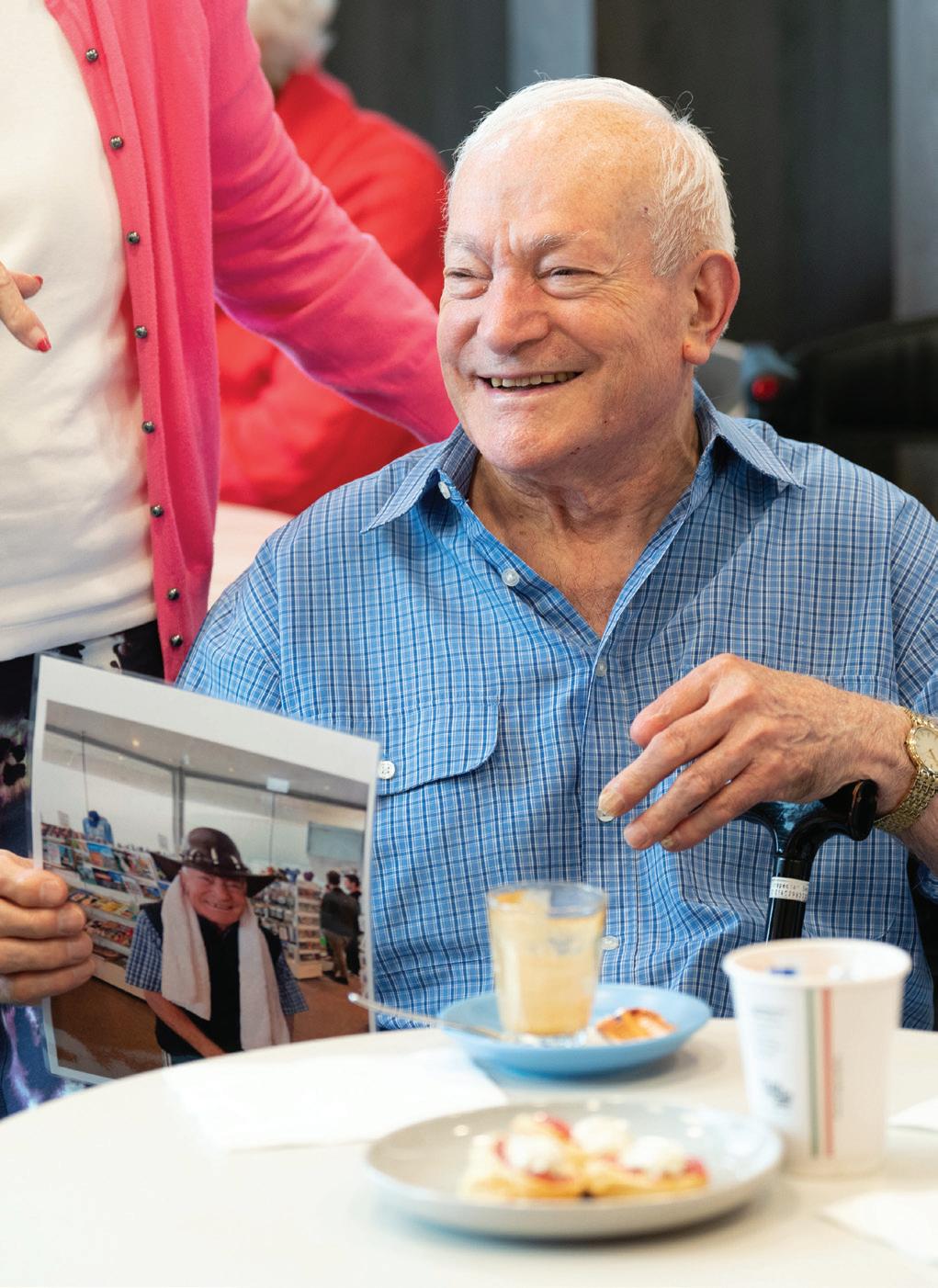
SUMMER 2022 9
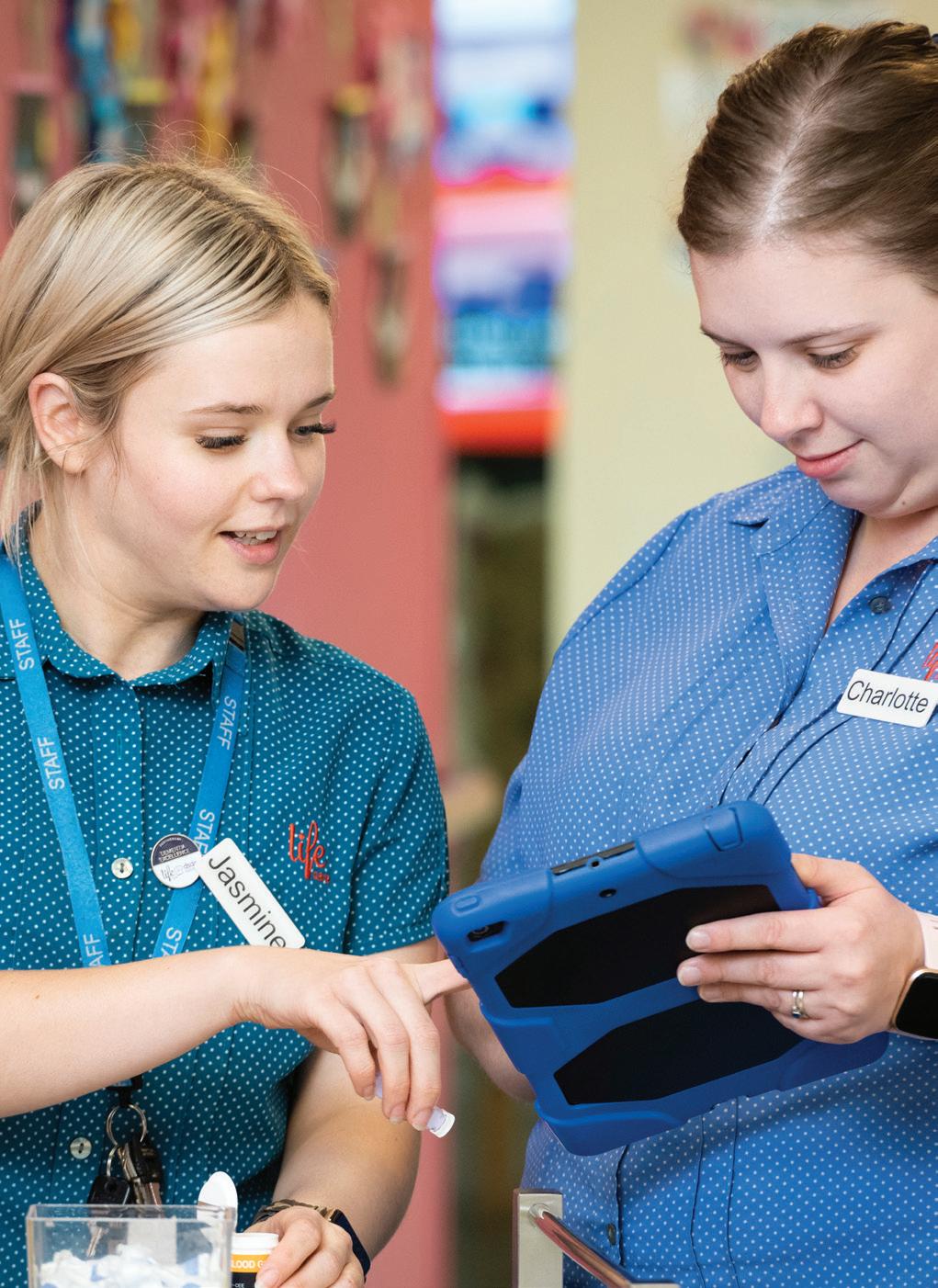
10 about life
Better systems. Better experience.
Introducing Life Care’s new Customer Feedback Framework
During 2022, Life Care received feedback from customer and family – both via the recent Point Herd focus groups (see page 4-5 for more detail), and from clients and families directly. This feedback made clear that Life Care can do better in how we manage and respond to feedback and complaints. Based on this feedback and the findings of the recent Point Heard “Voice of the Customer” reports, Life Care recently launched its new Customer Feedback Framework.
In this new framework you will see
· A streamlined pathway for the Customer feedback
· Life Care team members empowered to ‘own and resolve’ feedback on the spot or escalate it if they don’t have ability to address this themselves. Our new Feedback Process is a quick and easy way for team members to know how to respond to feedback
· More visibility for families and residents on trends in feedback and the site and organization response
Introducing Life Care’s new care & clinical management system
Life Care recently implemented a new care and clinical management system at four of the five residential care homes, with the fifth home following early in 2023.
The new system is called Leecare and represents a considerable step forward over our previous system: with a person-centred structure, and an intuitive platform for step-by-step support of residents. As a result of this new system, you will see:
· Improved quality of care planning linked to a residents assessments
· Staff able to complete assessments or charting on mobile devices (ipads and phones) to ensure they have less time behind a computer and more time with residents.
SUMMER 2022 11
1. Apologise, Ask & Listen 2. Act 3. Ask again 4. Share or Escalate
Our People
New faces and career progressions at Life Care
Grace Scaffidi General Manager
Corporate Services
Grace Scaffidi joined Life Care in the role of General Manager Corporate Services in October 2022.
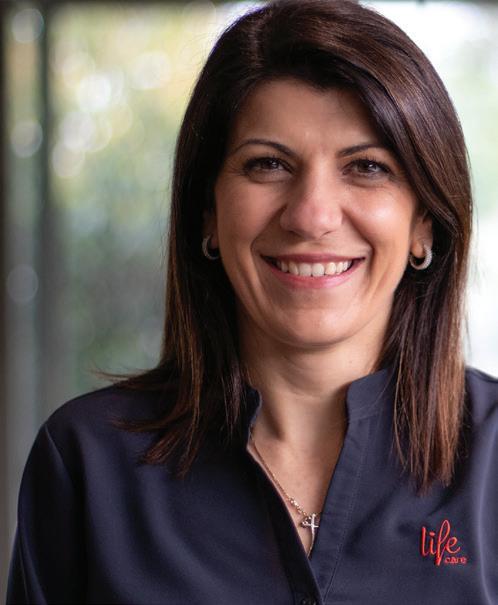
With over 20 years’ finance and accounting experience across local government, media and consulting industries, Grace’s expertise will add considerable knowledge and depth to Life Care’s corporate services team.
Grace also volunteers as Treasurer for Trinity College Gawler. She is fluent in Italian (and English!) and enjoys keeping fit because she loves to eat and cook and spend time with family and friends.
Catherine Hughes Chief Operating Officer

After 20 years in the SA public health system, Catherine came to Life Care in late July 2022 seeking a different way to engage with the community’s health and wellbeing and to provide superb outcomes for our older South Australian. Since arriving, Catherine’s early areas of focus have included: the implementation of Lee Care; supporting services with their accreditation; and consumer engagement and feedback management.
A mother of a bright and bubbly 6-year-old, Catherine is excited to have recently reintroduced intergenerational visits into our residential care homes.
Catherine is also excited by the enthusiasm and commitment of the Life Care team and executive.
12
about life
Glenys
Brooks Retirement Living Coordinator
Glenys Brooks has been part of the Life Care family for over 12 years, working in a myriad of different roles from Personal Care Worker with At Home, to a stint at Norman House, to Office Coordinator and Projects Coordinator for our Property team.
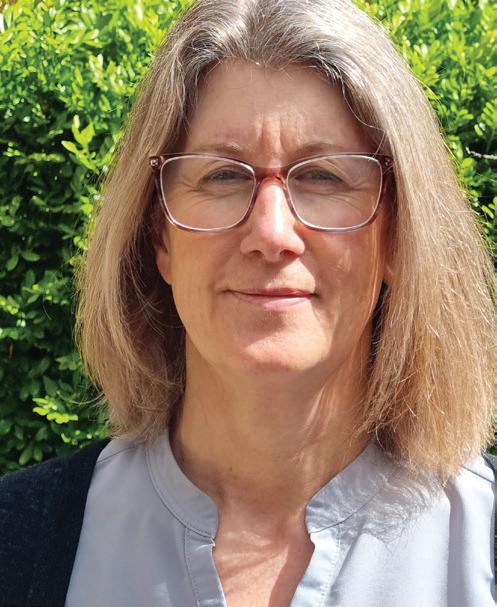
Most recently, Glenys has been a cornerstone of our Customer Enquiry Team until her latest move. From November 2022, Glenys will be our new Retirement Living Coordinator, supporting those who are moving into independent living homes or assisted living apartments.
Glenys has an old Staffie called Gertie and volunteers with Anglicare, organising camps for children suffering grief and loss. She also volunteers with Camp Quality organising camps for kids and families impacted by Cancer.
Belinda Thompson Customer Enquiry Team Coordinator

Belinda Thompson has worked with Life Care for over 14 years! As an LED Coordinator, she has been a vital part of the Reynella Lodge team, and now, we are very excited to have Belinda moving into the Customer Enquiry Team Coordinator role that Glenys is vacating. With such an extensive understanding of the resident and family experience, Belinda will be a godsend to people navigating this challenging period.
Belinda has an interest in aromatherapy and enjoys learning more about the oils and their benefits. She would like to do the Maria Island or Bay of Fires walk in Tassie one day and is an avid Crows supporter due to family ties with the club. She’s a member and goes to most games. She also enjoys the cricket and basketball and netball and, well, most sports.
SUMMER 2022 13

14 about life
The Living Saints
The poem “Crabbit Old Woman” was found among the possessions of an aged lady who died in a hospital’s geriatric ward.
There is no information about her name, when she died or who she was. The poem asks, ‘What do you see… when you look at me?’ It challenges the reader’s assumptions about what they should ‘see’ when they look at an older person.
When first meeting Pam Duffy, what you see is a woman who looks to be possibly in her late seventies. She has alert eyes and a quiet confidence as she goes about her cozy home in Glenside.
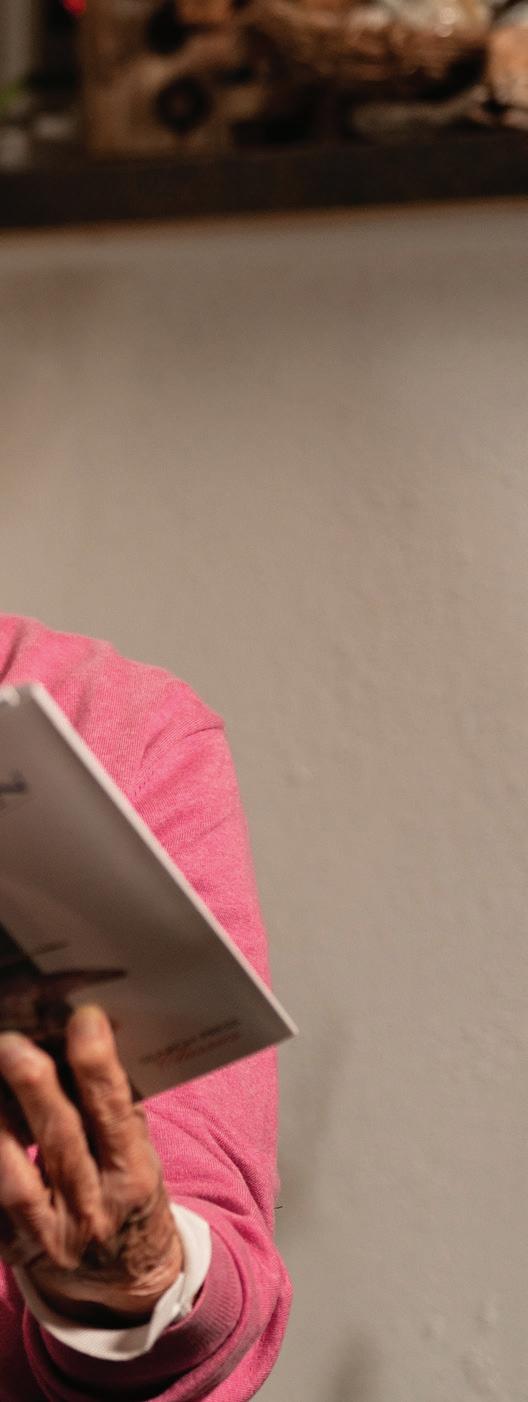
Pam is a worthwhile study on the matter of looking beyond first impressions. For starters, she is actually 92 not seventy-something. But more importantly, her depth of experience, character and charity rewards the person who takes the time to ‘see’ the real Pam with amazing tales. Indeed, an article of this length will never come close to doing justice to Pam’s life.
Pam’s life has a multitude of facets worth exploring: she designed the home she lives in; she keeps a spare bed available for strangers; she has a rescue cat named Jessie that regularly scratches Pam, often drawing blood. She loves and cares for her just the same.
Jessie is actually good place to begin; Pam’s devotion to Jessie is perhaps the first little window into her remarkable life and the driving motivation behind many extraordinary experiences, or ‘moments’ as she calls them.
‘My father had an enormous devotion to all animals,’ began Pam. ‘The house always had a basket with something broken or wounded in it, so it was kind of the norm of the family to care for or protect things. And that’s stuck with me, and then I always felt that because I was, in inverted commas, “perfect” – I could see, I could hear, I could move – that I owed
SUMMER 2022 15
[people something], that I had a debt to pay. And I had that [feeling] from very young in life.’
Far from a burden or sense of onerous obligation, Pam’s sense of debt was ‘a driver to look for something that could fulfil that feeling I always had.’
It is one thing to have a sense of debt; doing something meaningful in response is something else entirely. For that, you first need to grow. Enter the people and experiences that began Pam’s journey to ‘pay her debt’.
Like being employed as a dental nurse for the famous dentist, ‘Mr. E. H Jenkins 33-Collins-StreetMelbourne. I owe a lot to all the teaching that he gave me,’ said Pam simply.
Like the woman who happened to mention that she was training to be a nurse at the children’s hospital. ‘That’s when the lightbulb flashed [inside me], and I thought, “Yes, that’s what I can do to be useful.”’
The resulting study gave Pam some of her early and ultimately indispensable skills.
‘I’d always felt that life was going to be tough and that I had to equip myself for it. So, being a doublecertificate [nursing] sister gave you much more choice than just being a trained nurse.’
Certificates in midwifery and anesthetics were selected and passed.
And then, along the way, Pam fell in love with a Czech migrant named Karel Roubal.
‘Then I had a baby, three years and thirteen days after I got married.
‘And we had a little house in North Balwyn. ‘And we were radiantly happy.’
‘And then, when the baby was 8 weeks old, my husband was killed in a car accident.’
This would have been enough for some: enough to curl up in a ball and hope for the end.
‘In those days you couldn’t afford to keep a Labrador on the Widows Pension,’ said Pam. ‘There was no childcare, so I worked out the only way I could keep my child and survive was to do Infant Welfare; this was my third [nursing] certificate and would enable me to run a baby health centre.’
So that’s what she did. After four months of study, when she only saw her baby son once a week, she found a position in the infant welfare system. At 25, she was the youngest baby health centre sister in Australia.
‘I felt like putting a sign out on the door that said, You know you know more than I do!’
Pam went on to compete 10 years with the Maternal and Child Welfare Department of Victoria.
From there, Pam moved to Adelaide to become matron of Uraidla/ Summertown District Hospital.
Pam then attended the South Australian Institute of Technology to study social work, group work and family therapy. While there, she was approached by a woman named Susan Brookman who offered her the role of Matron for Sister Mary’s Home for Children. This home provided emergency and long-term care for children in crisis up to 9 years of age. There, Pam cared for children who had suffered every form of abuse and neglect along with those requiring respite or extra care following hospitalisation.
‘When I took it over, it had been run, of course, on the usual old residential care lines. It was rigid, and the kids were bathed by 4 o’clock and sat around in dressing gowns, and it was everything that I did not agree with.
Then came perhaps Pam’s most significant role as Principal Officer with Australian’s Aiding Children (formerly ASIAC), an organisation almost entirely staffed by volunteers.
‘They were doing international adoptions, aid projects, medical aid projects, sponsorships. ‘We worked with Rosemary Taylor in Thailand, who is known as The Saint of Saigon; she was responsible for evacuating all of the children when Saigon fell [at the hands of the People’s Army of Vietnam and the Viet Cong on 30 April 1975]. We also did work in other Asian countries including Vietnam and Indonesia because there were children there in need of very specialised care.’
One such child was Purija.
16 about life
‘I set up the home as really more a holiday place for children; there was lots to do, lots of fun to be had.
An 11-year-old Indonesian girl, Purija had a frontonasal encephalocele – essentially a very large hernia or tumour that had begun to grow at the top of her nose between her eyes.
Without intervention, Purija would have ultimately died from her condition or potentially been sold as an ‘exhibit’.
Instead, the renowned Adelaide craniofacial surgeon Dr. David David performed surgery on Purija, and she returned to a normal life.
Purija was the first of many children Pam and her team brought for surgery from Vietnam, Cambodia and Thailand.

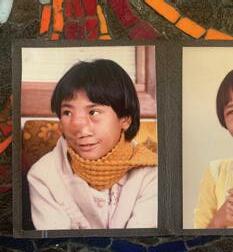
‘When I took Purija back to Indonesia, there was this Chinese doctor and his wife who were rescuing children out of garbage cans, and they were feeding them and looking after them.
‘I noticed that there was this huge wall around their house, and I asked them why they needed a fence like that. [The doctor] said, “Oh well, they throw things over [the fence] trying to kill us.”
‘Now, here’s a Chinese couple rescuing Indonesian babies trying to keep them alive, and [other people] are trying to kill them by throwing missiles and stuff over the fence. You never hear about those things, but you know I’ve been a witness to it.’
At this point, you may realise that Pam’s story is actually many stories. The longer you spend with her, the more you will hear. Each story represents lives that have intersected with hers.
Like a Cambodian boy named Kiri, who Pam brought to Adelaide for surgery from Cambodia.
‘I found Kiri in a Canadian children’s home, and [he had] no hands, no feet, [and there was] no way of feeding him except [through a] nasal tube; [he was] in a very bad state.
‘So [again I spoke with] Dr David David; I bought the photos [of Kiri] back [to Adelaide], and [Dr David] said, “If you get him here, I’ll sort him out.”
Pam’s best friend brought Kiri to Adelaide, and Robyn Schroeter ultimately adopted him. ‘You never hear about her.’
Kiri now has a family of his own.
The stories kept coming.
Like the story of Pam organising a shunt for a baby with hydrocephalus that otherwise would’ve died.
Or the story of Father Bruno, a translator in Thailand, who packed up all the leftover food from their conference and delivered it to the poor.
‘See that’s what I’m saying. The Living Saints!’ exclaimed Pam. ‘See that’s what I’m saying. The Living Saints!’ exclaimed Pam after recounting Father Bruno’s story.
Or the one when a Sri Lankan nun was teaching girls needlework, so she could sell it door-to-door in rag-covered feet to make enough money to keep the girls alive and off the streets.
On her habit there were patches on the patches. ‘And I’d never seen [patches on patches] before. I guess the tears came running down my face. Her gentle hand was on my shoulder. “We take the vow of poverty.”
‘You’ve got to be there to witness these things and so see what other people do.’
This brings us to the crux of Pam’s story. Because her story is one of many stories. And it’s one with a message that many need to hear.
‘The message I would send is that there are the Living Saints everywhere, who are volunteers, who you never hear about and who do this tireless labour.’
Of course, when you’ve lived a life surrounded by Living Saints, and you’ve lived not just as an observer but a participant, it’s not surprising when something quite profound happens.
‘Well, you have no regrets,’ said Pam quite simply. ‘You know that you’ve done exactly as much as you could along the way. So you don’t have regrets. And you try to still keep looking after people. I mean when you’re 92, everybody you know is either dying or pretty crook or fading or their kids are having dreadful things happen to them, and I just try to be there for other people as much as I can.’
And that brings us back to Jessie, the rescue cat. She is not some out-of-the-blue whim but a natural extension of the selfless acts that Pam has been doing her whole life. And if they’re not enough to be called a Living Saint, what is?
SUMMER 2022 17
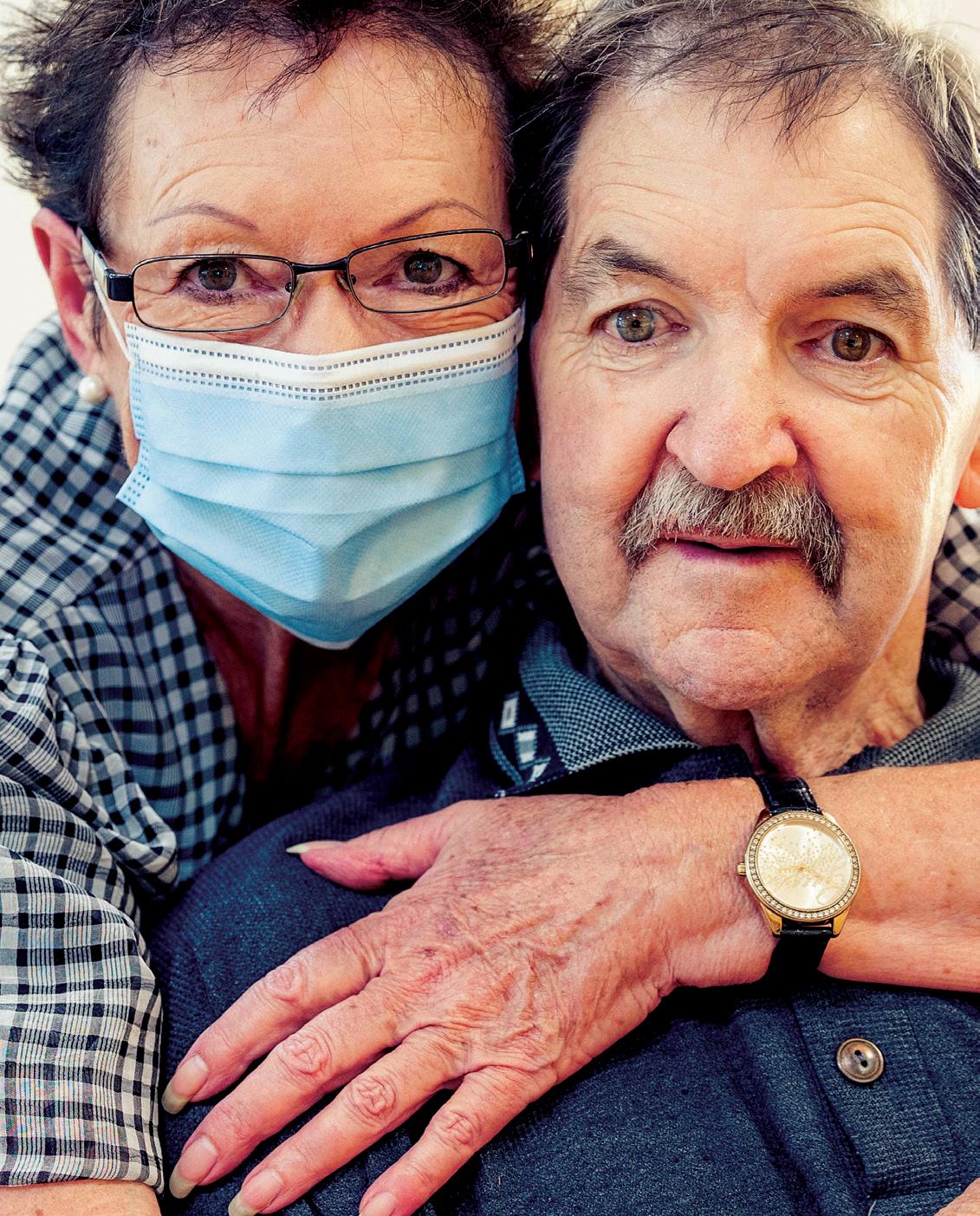
about life 18
Saving Grace
As Barbara sat at the window table in Bracegirdle’s at McLaren Vale, she looked calm, relaxed, and well-presented. Perhaps more importantly, she looked healthy. You’d never have known she’d gone through one of the most traumatic experiences a wife could ever imagine.
Married for 56 years, Barbara and Colin Semmens lived in McLaren Vale their entire lives. Barbara still calls McLaren Vale home, but in 2016 she noticed that something wasn’t quite right with Colin.

‘In the June of 2016, Colin had a reunion in Perth for his army platoon and he’d been looking forward to it for two years. We decided we’d drive, and we got about 50k’s west of Port Augusta and at 3 o’clock in the morning [Colin] had what I think was his first panic attack.
‘The next morning, I stopped at the exit of the caravan park and said, “Home, or Western Australia?” and Colin said, “Home.”
‘That was telling.’
Next came a series of inexplicable experiences where Colin just wasn’t himself: from filling the diesel car with petrol, to putting an extension lead in the microwave and dog bones in the shed instead of the other way around, to being unable to stand the noise of the grandkids on their holiday; something was definitely not right.
‘It was the fourth day of our annual Christmas holiday in Port Elliot that Colin said, “I’m going to have to go home Barb.” From then until the middle of February, he went [to hospital] in the ambulance four times. He would get chronic headaches and go into a semi-conscious seizure.
SUMMER 2022 19
‘The final time, they took his blood pressure, and the paramedic said to me, “You go and pack your bag because he’s not coming home.” His blood pressure was 70 over something, and he was non-responsive.
‘A few days later, the doctor called me and asked me to meet him. He said that Colin had Aphasia.
‘The best way I can explain [Aphasia] is to say that basically the right-hand side of his brain just died, and it came into the frontal lobe as well, so he has Alzheimer’s as well.’
The shock of this diagnosis in 2017 was only the start of a harrowing journey for Barb.
‘The next year was just a steady decline, but nothing too bad until the May of 2019 when we went into a day of almost total incontinence. [The incontinence] really threw me for a sixer.’
As Barbara described that day in detail, the sense of how confronting it would be to have someone you have loved for so long being so out of control was overwhelming. And while Barbara acknowledged this was absolutely the case, sharing her story is, for her, both cathartic and altruistic.
‘In October of 2019, we had a particularly bad morning with total incontinence; Colin was incontinent three times. The third time [the incontinence] happened, I phoned [our son] Matt and said, “I can’t do this.” [Matt] came down and after showering Poppy, he said, “How the *#@^ do you do this?!”
The answer is, quite simply, at incredible personal cost.
‘From when Colin became totally incontinent in May 2019 until he went into Flinders [Hospital] on February 11th of 2021, I’d lost 18 kilos, and my hair was falling out. I was a total emotional wreck.’
The trauma was the result of Colin’s continued decline. Leading up to his admission to Flinders Hospital, Colin: could no longer feed himself; he would wander around the house or up and down the street (neighbours became invaluable support); he would ‘shadow’ Barbara, standing immediately behind her wherever she went; and, would regularly rearrange all of the furniture in their house.
‘It was absolutely chaotic. There wasn’t a moment of the day when something wasn’t happening,’ said Barb.
‘Then, in January 2021, I put him into a nursing home. He lasted 48 hours and then he assaulted a lady there, so I had to bring him home.
‘Then Colin started not sleeping. He would [only] sleep for ten minutes at a time.
‘On February 11, at a quarter to one in the morning, Colin was outside, pulling my petunias out of their pots. Then he was off up the street.
‘That was it. Something snapped in me. I went and got my phone and rang the ambulance. They were fabulous.’
Colin was admitted to Flinders Hospital for 14 days, in which time he had 10 ‘Code Blacks’. A Code Black is called when a patient endangers themselves or hospital staff. He had a guard stationed outside his room 24 hours a day.
‘On the fourteenth day, the doctor said they were transferring Colin to Noarlunga Hospital, awaiting entry into SADU,’ said Barbara.
SADU is SA Health’s Specialist Advanced Dementia Unit at the Repat Health Precinct at Daws Park.
‘Colin was their longest serving patient – thirteen months and 12 days he was there.’
For Barbara, as with many people whose loved ones move into care, this time was filled with grief and guilt mixed with absolute relief.
Barbara’s next challenge was finding somewhere permanent for Colin to live; SADU does not provide permanent accommodation but ensures the patient is medically stable before they move into permanent accommodation.
‘I personally applied to two nursing homes,’ said Barbara, ‘and Margo, my social worker, applied to eight more. As soon as they got the doctors’ report, they just said no. This meant that the only options
20 about life
‘And that just totally turned my life around for the better,’ said Barbara.
for Colin were to bring him home, or for him to go into the general ward at Flinders Hospital.
‘Then, all of a sudden, Margo said that Life Care at Aldinga Beach would be willing to accept Colin under the Memory Support Transitional Team (MSTT).’
The MSTT is a firstof-its-kind pilot program developed and led by the Southern Adelaide Local Health Network (SALHN).
As the state’s only residential care provider with an in-house geriatrician, Life Care was chosen to partner with SALHN to see Colin and five others transition safely into residential aged care under the MSTT.
Reflecting on her experience, Barbara wanted to share not only insights into what happened but also advice for those who may be in a similar situation.
‘Definitely get more in-home care before things get too bad; you need support at home through a home care service like Life Care.’
In addition to practical support at home, Barbara also recommended emotional support for the person who is caring for their loved one.
‘Right at the beginning of Colin going into SADU, I met with the loveliest lady from Dementia Australia. [With Colin now cared for at SADU] I thought I was going along famously [on my own], but she made the first session for an hour and a half. I cried for 40 minutes. I just blurted everything out. That was a turning point for me.
‘Get help earlier [than I did]; that’s my one major recommendation. Because if you don’t know anything about dementia or aphasia, you don’t even know where to start. The help is out there. I didn’t know it at the time, but it is.’
‘The day that I got the call from Margo to say that Life Care at Aldinga Beach would take him under the MSTT program… I got off the phone and I had to have a few drinks [to celebrate]! I’ve lived in McLaren Vale for decades, and I’ve never heard a bad thing about Life Care Aldinga Beach.
‘I’ve actually got my life back, to a point. I go to see Colin every other day. I usually go down at 4 o’clock and feed him. But the little things, like going to the Melbourne Cup Lunch for the first time in years, they’re things that I’m valuing again.’
If you are going through a similar experience, Life Care can help. Please contact our At Home team on 1300 555 990.
SUMMER 2022
21

22 about life
Caring for Centenarians

Our Personal Care Workers reflect
Maya Angelou once said, ‘I’ve learned that people will forget what you said, people will forget what you did, but people will never forget how you made them feel.’
In residential care, all roles play a part in how residents ‘feel’ about life, but none more so than carers.
In a recent interview with three Glenrose Court carers, Alice, Nadee and Lalit, we spoke about caring for someone nearing or past their 100th birthday.
One comment, in particular, summed up the wonderful approach our carers take with our most senior elders.
As human beings, we all have our own
What an excellent attitude to take to such a vital role!
When
SUMMER 2022 23
‘I put myself into their shoes,’ said Alice. ‘I look at [the residents] like this could be my mum or my dad. I care for them in a way that I would care for my own people, with a positive attitude to them.
issues.
I come to work, I have my own issues, I leave [them] outside there, and I’m going to treat this person like everything is ok.’
Rumpus on the campus


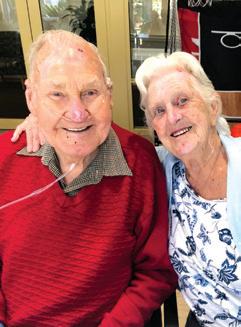
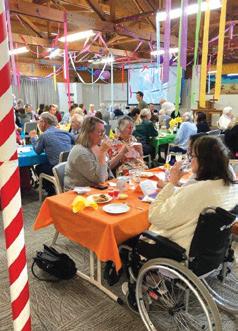

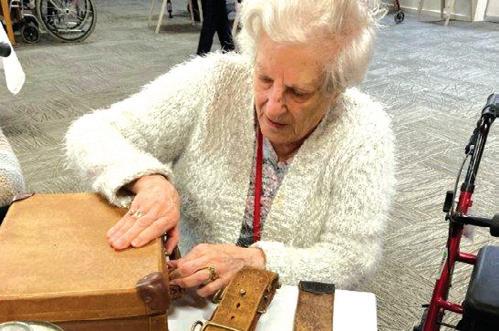
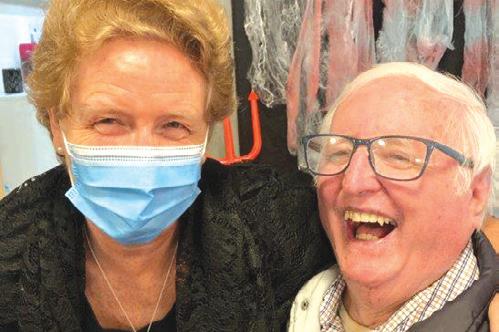


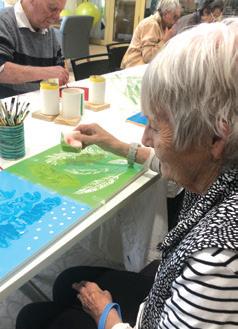
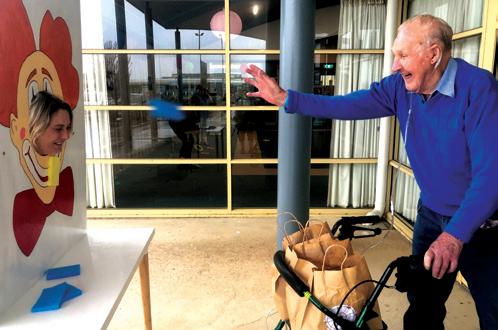
24 about life
Care people show us what they get up to every day... You can keep up to date each day and across our campuses @lifecaresouthaustralia
Life
Parkrose Village – Devilish friends Parkrose Village – Crafty fun
Aldinga Beach Court – Creative and fun times during Show Day!
Aldinga Beach Court
Aldinga Beach Court - Good aim!
Aldinga Beach Court
–
Parkrose
Village
Halloween hilarity
– Diving into Dementia week
Parkrose
Village
–
Parkrose Village
Family dinner



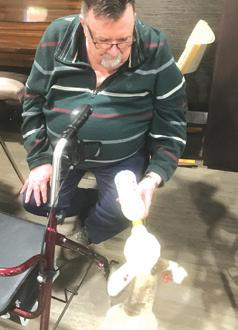

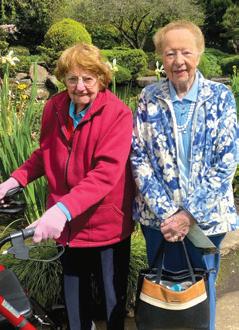
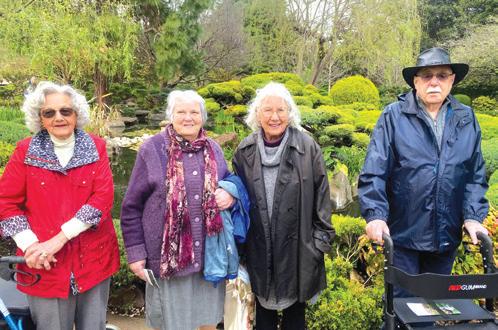

SUMMER 2022 25
Glenrose Court - Hungry furry visitors
Glenrose Court - Regular furry visitors... and kisses!!
At Home clients — Out and about taking in the Botanic Gardens
and Cookaholics!
Glenrose Court - Cuddle festivals...
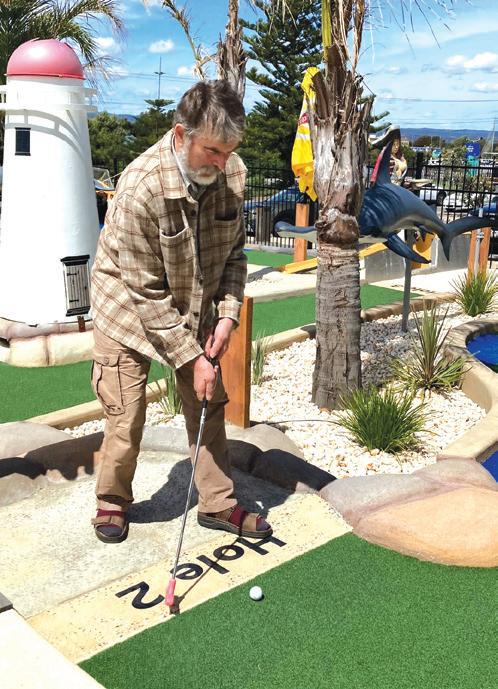

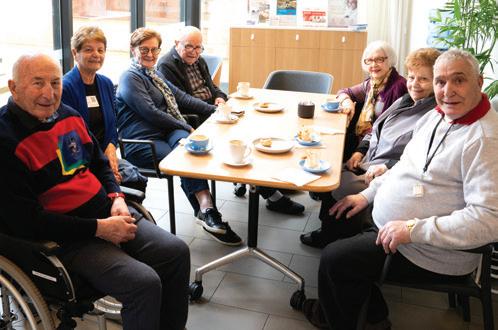





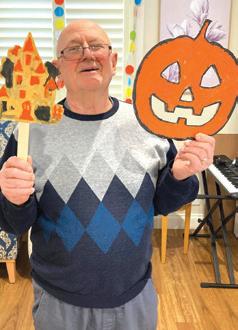
26
about life
Norman House - Golfing legends
Gaynes Park - Out on an Adventures
Gaynes Park - Anyone for coffee?
Norman House – Anniversary celebrations
Life Care “On the Go” — Visit the Adelaide Zoo
Norman House – Taking care of Halloween decorations
Norman House – Chillin’ together at the Port
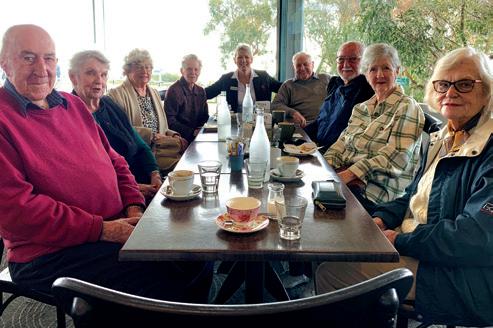

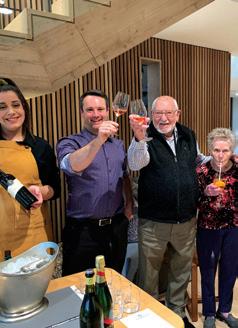

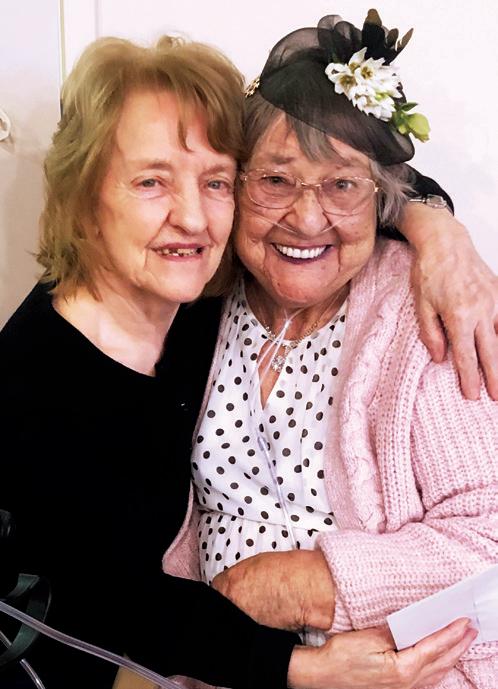
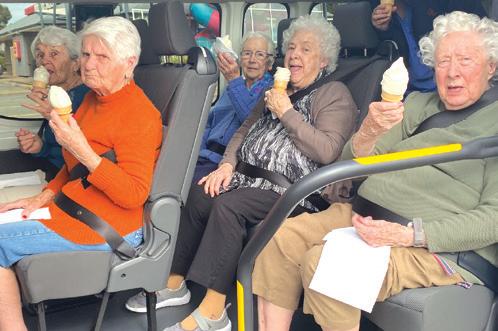
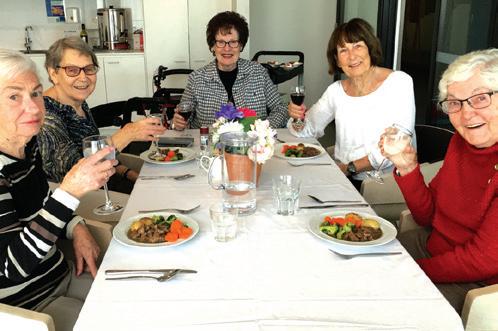
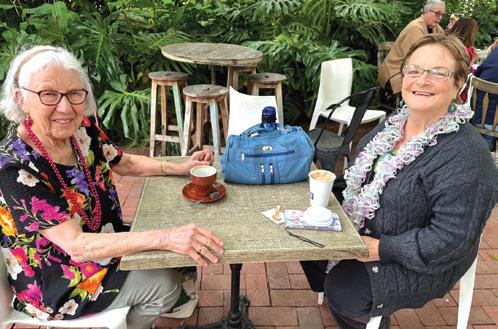
SUMMER 2022 27
Gaynes Park - Lunch-a-lot outing at Mt Lofty
Gaynes Park - Ladies lunch
Reynella Village - Grand final day
Reynella Village - Treats on board
Reynella Village - Melbourne Cup winners
Gaynes Park - Happy hour
Gaynes Park - Royal Adelaide Show 22
Life Care “On the Go” - Visit to Adelaide Botanic Gardens
About Life is the official publication of the Churches of Christ Life Care Inc.
Would you like more information about Life Care or to receive your own copy of About Life?
Contact us T 1800 555 990 E enquire@lifecare.org.au lifecare.org.au
We welcome your feedback Please email feedback@lifecare.org.au or post to: About Life feedback Attn: Andrew Harvey 128 Greenhill Road Unley SA 5061
Life Care About Life publication Design and Layout proudly supported by
Detour Design Studio Brand + Communications
www.detourdesign.net.au
























































